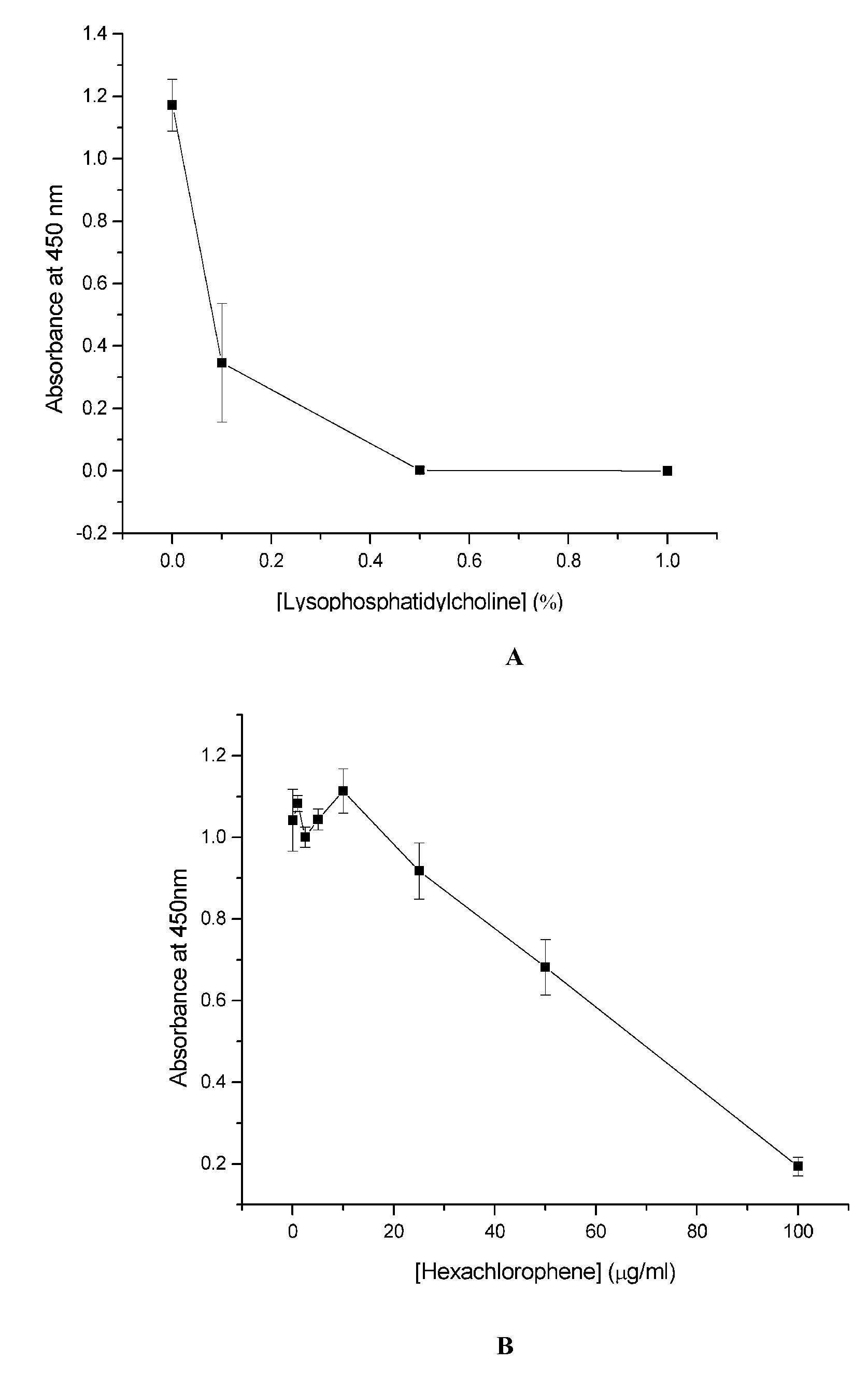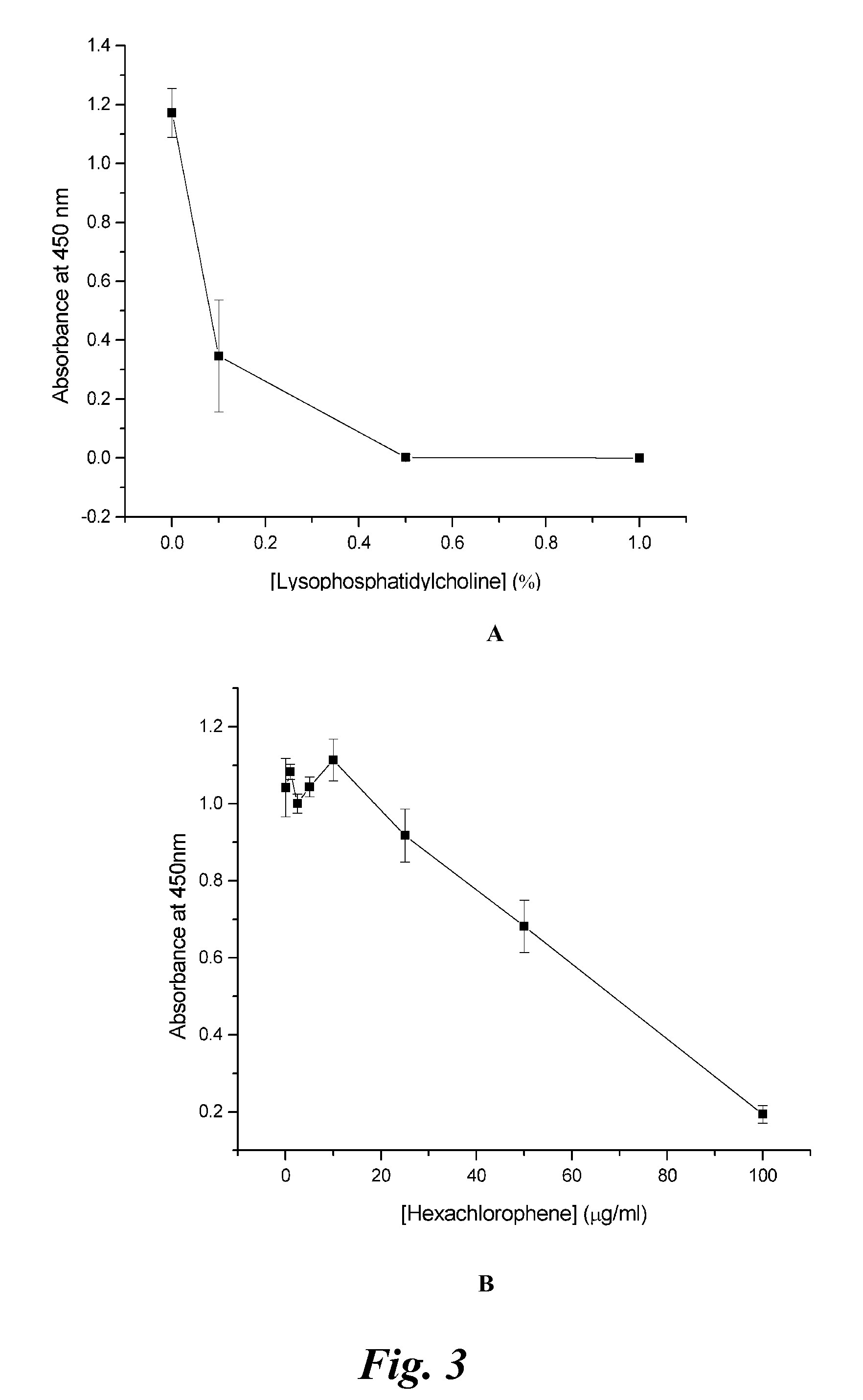Cell Culture Model for Demyelination/Remyelination
a cell culture model and demyelination technology, applied in biochemistry apparatus and processes, instruments, library screening, etc., can solve problems such as poor response, and achieve the effects of enhancing remyelination, preventing demyelination, and stabilizing the health and function of demyelinated neurons
- Summary
- Abstract
- Description
- Claims
- Application Information
AI Technical Summary
Benefits of technology
Problems solved by technology
Method used
Image
Examples
example 1
[0036]Cell Culture.
[0037]Mouse embryonic stem cells (ES-D3) obtained from American Type Culture Collection are maintained in the undifferentiated state by growth on gelatin-coated flasks in the presence of leukemia inhibitory factor and 2-mercaptoethanol at 37° C. in a 5% CO2 humid environment (Williams, et al., 1988). Cultures are restarted from frozen stocks every month to maintain the undifferentiated state. Culture medium is Dulbecco's Modified Eagle Medium (Invitrogen) with 10% embryonic stem cell qualified fetal bovine serum and 10% calf serum.
[0038]Differentiation into mixed cultures of neurons and CNS-type glial cells are by the 4− / 4+ protocol described by Bain, Ray, Yao, and Gottlieb (1996). This involves growth on a substrate that is not permissive for cell attachment for four days during which time embryoid bodies form. Induction of differentiation is by addition of retinoic acid for an additional four days. The embryoid bodies are then dispersed and plated in the absence...
example 2
[0043]Genomic Analysis.
[0044]Comparative hybridization of neuronal cultures with and without myelin is used to detect changes in gene expression that occur in response to demyelination. Total RNA samples are extracted from myelinated or demyelinated cell cultures differentiated from mouse embryonic stem cells in parallel. Total RNA is extracted using a Micro-to-Midi™ RNA Extraction kit or a TRIZOL reagent (both from Invitrogen), and contaminating genomic DNA is digested with deoxyribonuclease I amplification grade (Sigma). The quality of each RNA preparation is checked using RNA 6000 LabChips™ (Agilent) to assess degradation, and the RNA concentration is determined spectrophotometrically (1 OD at 260 nm=40 μg / ml). Approximately 10 μg of total RNA is needed for each experiment. This amount can be obtained from 1×106 cells and is not a limitation in the cell cultures. Probes for the demyelinated and control cultures are generated by reverse transcription of total cellular RNA using Re...
example 3
[0051]Confirmation of Differential Expression
[0052]Quantitative RT-PCR or similar techniques may be used to confirm the differential expression of mRNA. In cases where commercial antibodies are available, immunoblots (Towbin, Staehlin, & Gordon, 1979) are used to demonstrate differences in protein expression. Protein analysis has the potential to reveal posttranslational modifications that are physiologically relevant.
[0053]For quantitative RT-PCR, primers are designed for each candidate gene to be tested. Briefly, sequences of approximately 20 bp with melting temperatures of about 60° C. at 50 mM NaCl and with an adenine or thymidine at the 3′ end are chosen to enhance specificity. The amplicon length is about 100 bp to maximize amplification efficiency, and the selected primers are tested for uniqueness using NCBI Blast searches. Two-step RT-PCR using oligo (dT) or the reverse primer as a gene-specific primer during first-strand cDNA synthesis is performed, optimizing reaction con...
PUM
| Property | Measurement | Unit |
|---|---|---|
| Density | aaaaa | aaaaa |
| Gene expression profile | aaaaa | aaaaa |
Abstract
Description
Claims
Application Information
 Login to View More
Login to View More - R&D
- Intellectual Property
- Life Sciences
- Materials
- Tech Scout
- Unparalleled Data Quality
- Higher Quality Content
- 60% Fewer Hallucinations
Browse by: Latest US Patents, China's latest patents, Technical Efficacy Thesaurus, Application Domain, Technology Topic, Popular Technical Reports.
© 2025 PatSnap. All rights reserved.Legal|Privacy policy|Modern Slavery Act Transparency Statement|Sitemap|About US| Contact US: help@patsnap.com



